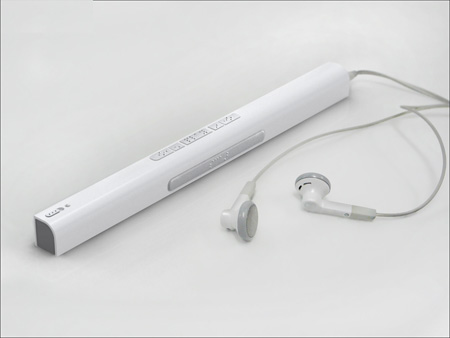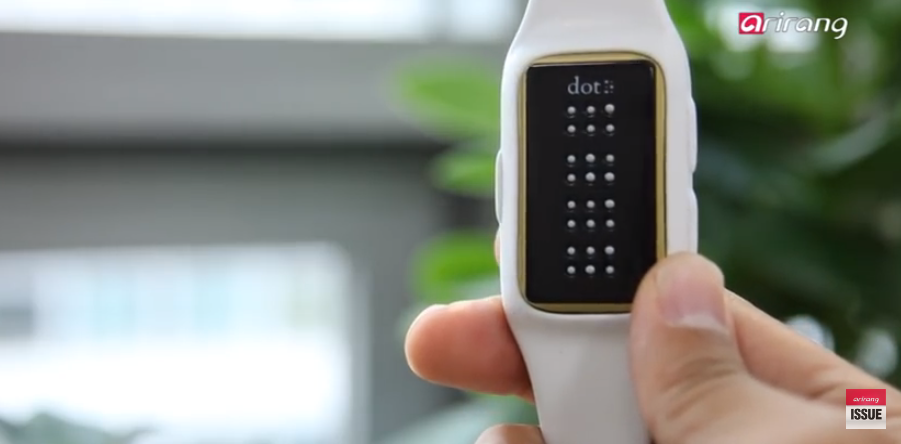Discover Ingenious Tools Developed for the Aesthetically Damaged
The growth of innovative tools for the visually impaired stands for a considerable innovation in ease of access and self-reliance. Technologies such as smart glasses with AI capacities and mobile applications created to give acoustic descriptions are improving day-to-day experiences for customers. Furthermore, wearable gadgets that use haptic feedback improve environmental understanding, while contemporary Braille technologies use new means to engage with message. As these tools proceed to advance, their effect on the lives of those with visual disabilities raises important concerns regarding the future of inclusivity and freedom in different elements of life. What lies ahead in this technological landscape?
Smart Glasses for Navigating

Smart glasses developed for navigating are reinventing the method visually damaged people interact with their setting. These innovative tools use a combination of cam modern technology, man-made intelligence, and auditory responses to give real-time info concerning environments. By employing obstacle discovery systems, wise glasses can alert customers to prospective hazards, enabling more secure movement in both unfamiliar and familiar settings.
The assimilation of GPS technology further improves navigating capabilities, allowing customers to receive acoustic directions as they move. This hands-free approach not only fosters independence however also encourages aesthetically impaired people to navigate metropolitan landscapes with boosted self-confidence. Furthermore, many wise glasses are outfitted with attributes that determine sites and road signs, offering contextual info that improves the user experience.
Furthermore, the growth of these devices is constantly advancing, with business working to improve the precision of things recognition and broaden the series of navigational attributes. As smart glasses come to be a lot more easily accessible and economical, they hold the potential to substantially transform every day life for aesthetically damaged individuals. Inevitably, these innovative tools stand for an essential action toward inclusivity, offering improved wheelchair and a greater feeling of autonomy for individuals navigating the globe around them.

Mobile Application for Daily Living
Just how can mobile applications boost the lives of aesthetically impaired people? Mobile applications are changing the way visually impaired individuals browse their environments, manage daily jobs, and access details. These applications provide necessary support via numerous performances, fostering independence and boosting lifestyle.
A number of innovative mobile applications are developed particularly for everyday living. Applications like Be My Eyes link visually damaged individuals with sighted volunteers via video clip phone calls, allowing them to obtain real-time support with tasks such as checking out tags or navigating unfamiliar rooms. Likewise, Seeing AI, established by Microsoft, utilizes man-made knowledge to explain environments, read message, and identify objects, successfully changing a smartphone right into an effective device for daily support.
Furthermore, navigation applications tailored for the visually damaged, such as Aira and BlindSquare, offer audio-based directions and environmental details, making it possible for customers to traverse their surroundings securely and confidently. Past navigating and prompt support, mobile applications additionally support organization and job monitoring, with functions that assist individuals establish pointers, develop to-do listings, and track consultations. In summary, mobile applications work as essential sources, equipping visually damaged people to lead even more independent and satisfying lives.
Wearable Technologies for Help
Empowerment through technology is significantly obvious in the realm of wearable gadgets made to help aesthetically impaired people. These cutting-edge tools integrate effortlessly right into day-to-day live, enhancing navigating and providing necessary feedback to customers. Smart glasses equipped with electronic cameras can review and recognize faces message out loud, enabling customers to engage more with confidence in expert and social settings.
An additional noteworthy advancement is making use of haptic responses systems in wearable gadgets. These systems make use of vibrations or other tactile signals to convey information regarding the user's atmosphere, such as obstacles or adjustments in terrain, enhancing wheelchair and safety. Wearable modern technologies additionally consist of wristbands that attach to smart devices, signaling users to notices through refined resonances, thus enhancing connectivity without dependence on visual hints.
As these modern technologies remain to develop, they are not just boosting freedom for visually impaired individuals yet additionally fostering a better feeling of addition in culture. By linking the gap between obstacles encountered in daily living and the capacity for freedom, wearable innovations work as essential my latest blog post tools in the mission for equality and empowerment for those with visual impairments.
Audio Description Tools
Audio description devices play a vital role in enhancing availability for visually damaged people, providing them with the capacity to involve with visual media. Speech-to-text devices for low vision. These devices offer narrated summaries of essential visual aspects in films, tv shows, and live performances, making certain that individuals can fully blue light filtering glasses understand the context and emotions communicated with visuals
Audio summary can be integrated right into various platforms, consisting of streaming services, movie theater screenings, and live theater. Lots of preferred streaming solutions now include audio summary as an access feature, permitting viewers to select it easily. Along with mainstream media, specialized apps likewise exist, providing audio descriptions for art exhibits, galleries, and other cultural events.
The effectiveness of audio summary depends upon the ability of the storytellers, that should communicate aesthetic details succinctly without interfering with the initial sound. Developments in this area are likewise leading the means for more customized experiences, where customers can readjust the level of detail and pacing according to their choices.
Braille Innovations and Devices
Braille tools and advancements have actually significantly transformed the method aesthetically damaged individuals communicate with text and info. Modern innovations have actually led to the development of flexible tools that improve proficiency and self-reliance amongst users.
Furthermore, mobile Braille notetakers incorporate typical Braille input with contemporary capabilities, promoting note-taking, scheduling, visit site and file editing and enhancing on the go. Voice-activated assistive devices. These portable tools frequently feature text-to-speech abilities, bridging the void between Braille and acoustic info
In enhancement, innovative Braille printers have actually arised, permitting individuals to produce Braille tags, papers, and instructional products effectively. This availability cultivates better involvement in academic and expert atmospheres, eventually advertising inclusivity.
Additionally, research right into clever Braille technologies proceeds to increase. Devices that include man-made intelligence are being checked out to provide real-time navigation assistance and contextual details, improving the customer experience in varied settings. Generally, these developments show a dedication to encouraging visually impaired people through technology, ensuring they can conveniently gain access to and involve with the world around them.

Verdict
The innovation of cutting-edge tools for the visually impaired dramatically enhances independence and top quality of life. Smart glasses, mobile applications, wearable innovations, audio description devices, and Braille advancements collectively equip individuals by supplying vital navigating aid, ecological understanding, and enhanced reading experiences. These technologies not just foster higher addition but additionally advertise freedom in everyday tasks, ultimately contributing to an extra easily accessible and equitable culture for visually impaired people. Continued development in this area holds guarantee for further improvements.
As wise glasses end up being more budget friendly and available, they hold the possible to significantly change daily life for visually damaged users. Mobile apps are changing the way aesthetically impaired individuals navigate their atmospheres, take care of daily tasks, and gain access to details. Apps like Be My Eyes attach visually impaired users with sighted volunteers through video clip telephone calls, allowing them to receive real-time help with jobs such as reading labels or navigating unknown areas.Furthermore, navigating applications customized for the aesthetically impaired, such as Aira and BlindSquare, offer audio-based instructions and ecological info, enabling users to traverse their surroundings securely and with confidence.The improvement of ingenious devices for the aesthetically damaged significantly enhances independence and high quality of life.